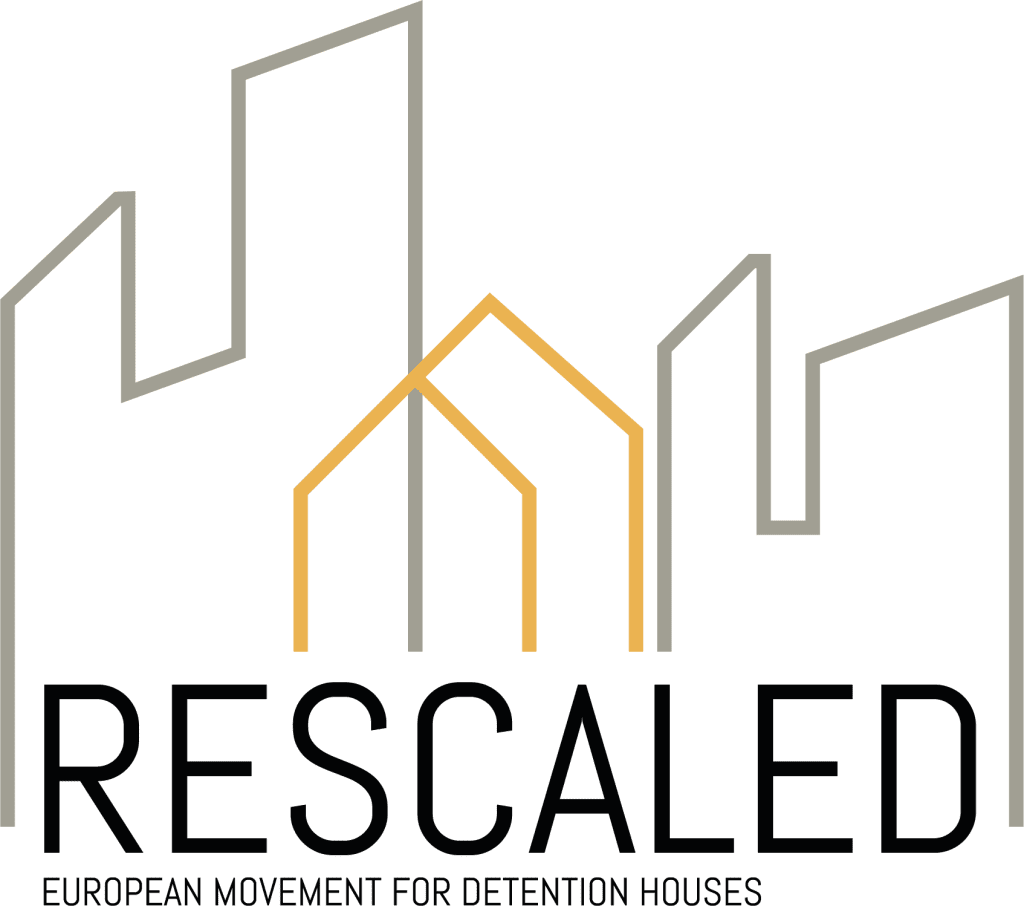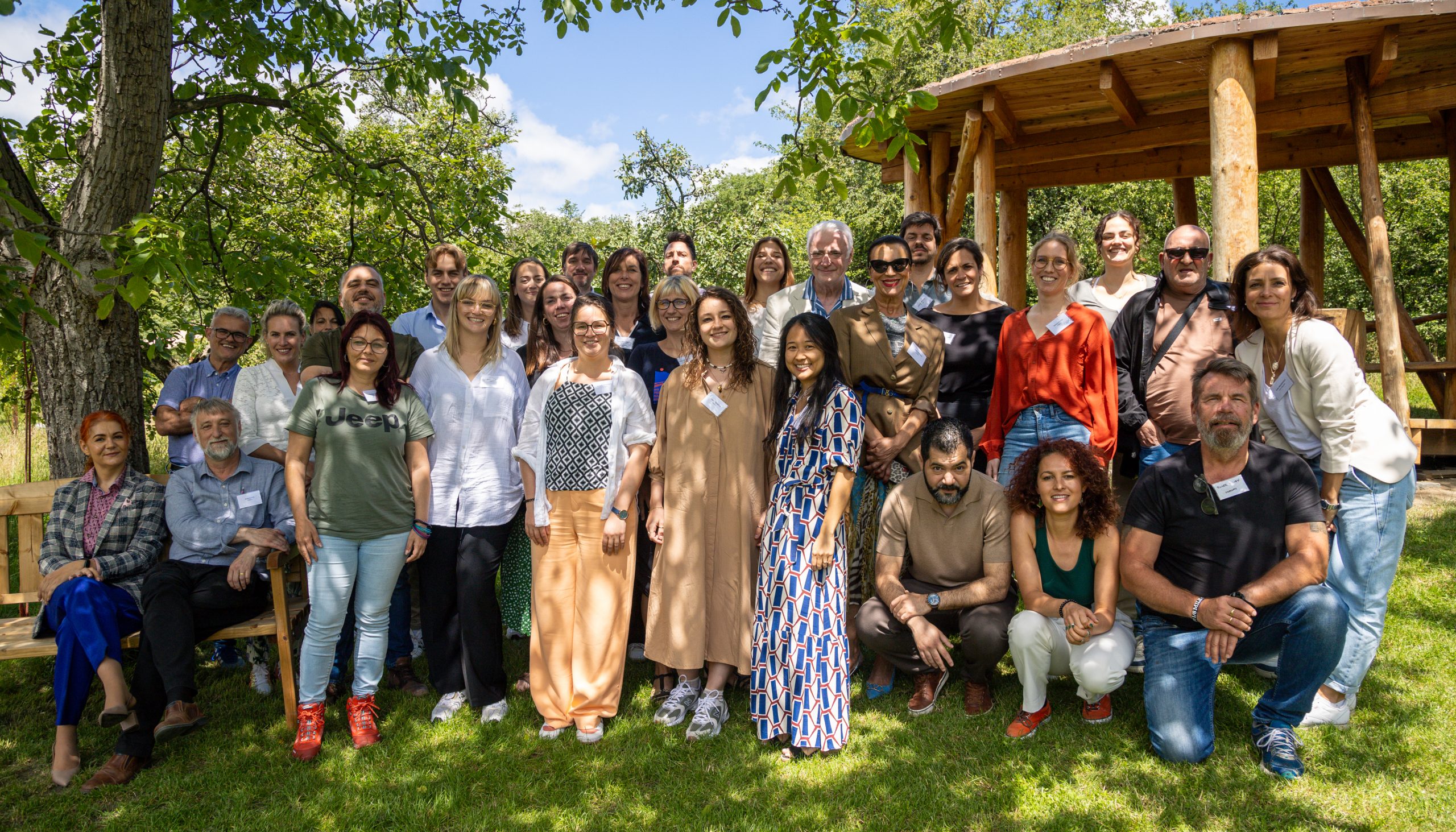Originally published on 19 April 2024 in Italian at www.rapportoantigone.it
This model of detention refers to three fundamental principles: small-scale, differentiation and community-integration
On March 21st we were guests of the Belgian Federal Senate, at the invitation of the European RESCALED network, to discuss small-scale detention with representatives of European institutions and civil society.
In recent years, the activism and visibility of RESCALED has grown in Europe, a network that supports small-scale detention houses that question the effectiveness of large prison institutions and traditional security measures. This model of detention refers to three fundamental principles: small-scale, differentiation and integration into the community.
In 2022 RESCALED attempted to map and describe the most interesting small-scale detention practices in Europe, differentiated and integrated into the community, adopting a common evaluation matrix, which in turn served as the basis for the preparation of detailed reports. All to enrich understanding of the most interesting practices and gain in-depth insight into the factors that contribute to the success, or potential risks, associated with the implementation of small-scale detention facilities.
To correctly understand the RESCALED approach, it is important first of all to clarify, the intentions of those who created the movement, and what the three principles stated above refer to.
- Small-scale: Detention houses have limited capacity, to allow for the creation of a community where individuals can regain their autonomy and act responsibly.
- Differentiation: Differentiation refers to the creation of an optimal environment that meets the unique needs and circumstances of individuals. It involves the ambition to place individuals within an appropriate context based on their needs and characteristics. This can be done by tailoring the security dimension based on the risk represented by residents and providing complete and personalized support, through services, activities and programs, to prepare people for their return to society.
- Community-integration: Detention houses should be integrated into the local community, to allow interaction and collaboration with the community. By using existing community services and in turn, offering shared services to residents in line with their needs, detention houses should establish meaningful links with the community.
The project is clearly ambitious and clashes, head-on, with many of the characteristics we generally associate with detention
The project is clearly ambitious and clashes, head-on, with many of the characteristics we generally associate with detention. It seems impossible, for example, to talk about a small scale, in a Europe where apparently increasingly larger prisons are apparently being built. Or to reason about differentiation, a principle often stated, but which usually represents only a feeble attempt to counteract the depersonalisation, disempowerment and rigid discipline that we almost naturally associate with detention. And the same goes for community-integration, a principle that is often appealed to, but which usually does not prevail over its opposite, i.e., the idea that prison is first and foremost a device for separation from the community.
Today in Lithuania many transition houses are opening, open prisons to prepare for release
Yet, among the experiences described by the mapping done by RESCALED, there are surprising cases. As one would expect, many of these concern the Scandinavian countries, countries that traditionally combine limited recourse to criminal justice with considerable support for inclusion policies through solid and widespread welfare.
But it also turns out that interesting things have happened in other countries in recent years. This is for instance the case of Lithuania, a country that for years had the highest detention rate among European countries and a detention model substantially borrowed from the Soviet Union. Today, many transition houses, open prisons to prepare for release, are opening in Lithuania, which to some extent try to adopt the principles stated above: small-scale, differentiation and community-integration.
The same thing has happened in Belgium in recent years, with the opening of several transition houses, as well as a number of detention facilities designed for a different type of user, people who have to serve short sentences. These too are small in size and with lower security levels, adapted to the risk actually posed by the persons housed and not calibrated, as often happens in traditional detention facilities, to the risk posed by the more conflictual and less cooperative minority of the incarcerated population.
Finally, and this is the experience of many countries, Italy included, for specific groups of incarcerated people, generally characterized by some form of vulnerability, the use of small-scale detention facilities, generally considered an improvement over mass incarceration, has been and is attempted. Think, for Italy, of our many small juvenile prisons, of the ICAM for detained mothers, or of the REMS for recipients of psychiatric security measures. Small-sized structures in which the progress made in terms of differentiation and integration with the community is probably not exciting, but in which at the same time the mere fact of their small size ends up at least containing their opposite, the depersonalisation typical of larger structures.
Warning against the risk that small-scale detention, if built in partnership with the private sector, may open the doors to forms of privatisation of detention
Antigone welcomed the confrontation with this reality, offering its experience and expertise. And for instance by promoting a reflection on the methods of monitoring and supervision of these facilities, which remain places of liberty deprivation, and therefore contexts where the risk of an illegitimate and arbitrary compression of fundamental rights is always present. But also warning against the risk that small-scale detention, if built in partnership with the private sector, as happens in some cases for example in the Netherlands or Portugal, may open the doors to forms of privatisation of detention. An outcome that is unacceptable to us but which must always be kept in mind, especially in recent years in which we have seen, not only in Italy, the disastrous outcome of entrusting the management of detention centres for migrants to private entities.
As I said, we therefore welcomed this confrontation. And this for several reasons. The first, the most obvious, is that we are interested in learning more about detention methods and practices that are different from those we are used to. Many scholars and operators from other countries are interested in ours, and in particular in the experience of REMS, which in Europe is often considered a good practice from which to take an example.
The second is that in Italy there has been a debate on these issues for years, generally confined to professionals, which has to some extent come out into the open with proposed law no. 1064 for the establishment of Territorial Social Reintegration Houses. The proposed law aims to establish alternative structures to prison, aimed at accommodating all persons who are serving a prison sentence, including residual sentences not exceeding twelve months. As of December 31 2023, this group was, as we reported, 7,648 people.
In these new facilities, with a limited capacity of between five and fifteen people, placed under the direction of the mayor or someone delegated by them, and in which staff employed by the Municipality should operate, it would be concretely possible to implement the constitutional principle of the re-educative purpose of punishment precisely because of their small size, but also because of their integration into the community, both of which are central to the reflection I mentioned above.
To reflect on the function we want prison to perform, on the characteristics it should have to carry it out and, on the indicators, we should use to verify its adequacy in practice
Finally, and this to me is perhaps the most interesting reason for this debate, the opportunity it presents to reflect on the function we want prison to perform, on the characteristics it should have to carry it out and, on the indicators, we should use to verify its adequacy in practice.
After all, decades of senseless debate on more or less extraordinary prison-building plans have not allowed us to make any progress in this direction. Over the years, astronomical figures and ambitious plans in terms of prison capacity have been discussed. Thousands and thousands of prison places have been promised and never realised, in a growing building frenzy, which was never accompanied by a reflection on what was actually to be built, and for what purpose. We continue to re-propose old detention models, more or less humanized, which we have seen in operation over the decades and which, when investigated, have proven to be good devices perhaps for the storage of human beings, generally in less than dignified conditions, but nothing more.
Is this the meaning of detention in our system? The containment and neutralisation of people who have to serve a prison sentence? Are we okay with this or do we want to try something else? And in which spaces, and with which organisational models? The debate on small-scale detention, as on any other concept of detention, inevitably raises these questions and imposes a reflection of which we have not been capable, and of which there is evidently a great need.





